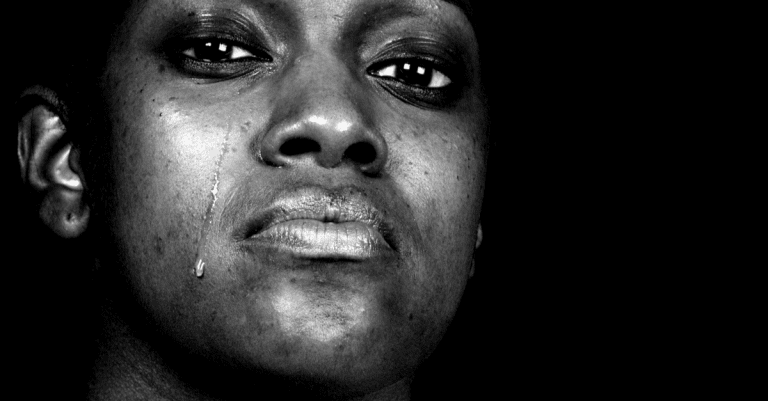
Are all persons created equal?
We have established in previous posts that biblically the answer to this question is an unequivocal “yes.” I doubt that among Christian readers today this claim even needs much defense.[1]
The question, however, is whether or not “all persons are created equal” has been true in American history? For many readers, I suspect that the answer here is also an unequivocal “yes.”
American history, however, suggests that things might not be quite so simple.
It is not uncommon for white Americans, at least the white Americans in my circles, to contend that racism is not a problem in the US; or, at least, there is no reason to believe that systemic racism exists in the present. After all, they claim, America was founded in accord with the biblical view of the equality of all persons.
They are, of course, referring to the statement in the Declaration of Independence: “We hold these truths to be self-evident, that all men are created equal, that they are endowed by their Creator with certain unalienable Rights, that among these are Life, Liberty and the pursuit of Happiness.”[2]
The problem, as Jemar Tisby notes, is that “Jefferson, as with so many of his day, did not consider black people equal to white people. Few political leaders assumed the noble words of the declaration applied to the enslaved.”[3]
Is this true? Did the Declaration of Independence intend to exclude people of color from the assertion that all persons are created equal?
The question as to whether or not the Declaration of Independence meant to include “everyone” in its affirmation that “all men are created equal” was specifically addressed in 1790 by the second act of the newly formed US Congress.
The Naturalization Act of 1790 declared, in part, “that any Alien being a free white person, who shall have resided within the limits and under the jurisdiction of the United States for the term of two years, may be admitted to become a citizen thereof. . . .”[4]
The Naturalization Act of 1790, thus, explicitly declared that only free white men (and to some extent, not even free white women)[5] could be naturalized as citizens, have the right to vote, to own land, to own a business, have the right to due process of the law, or sit on a jury.
This decision was made because debate had arisen regarding who was to be included in the affirmation that “all men are created equal.” Clearly, the Congress decided that African slaves were not.
This is not the only time that the US has declared that such liberties applied to only white men. In the famed Dred Scot case of 1857, Judge Roger Taney, writing the majority opinion, said black people were of “an inferior order, and altogether unfit to associate with the white race.” Taney further argued that the Constitution never intended to include black people, who “had no rights which the white man was bound to respect.”[6]
Who is white?
Throughout the 19th and 20th centuries the conundrum facing the US court system was not if the laws applied to only white men, but over “who was white?”
Several cases related to the question of “who was white” made it all the way to the Supreme Court in the 1920s. One of those was the case of the United States v. Bhagat Singh Thind.[7]
Thind, an Indian by descent from Punjab, India, who fought for the US in WWI, argued before the Supreme Court in 1923 that since he was from the Caucasus mountains, he should be considered a Caucasian—i.e., a white man—and granted US citizenship.
Thind bolstered his argument that he was white by claiming that he behaved like white men. He asserted that as a high-caste Indian he viewed the idea of marrying a person of a lower-caste repulsive. He stated before the Supreme Court that, “The high-caste Hindu regards the aboriginal Indian Mongoloid in the same manner as the American regards the Negro.”[8]
In other words, he did not argue that he deserved citizenship because he fought as an American soldier in the war, but that he, too, was white because he treated people of other races as inferior.
Nonetheless, the Supreme Court denied his request for citizenship. They concluded that he was not white because he failed to meet the “common sense” definition of white—essentially they argued that being India doesn’t count as white and everyone knows it even if we can’t explain it.
(NB: Thind was later granted citizenship when the US government declared that all veterans of WWI were able to gain citizenship).
Why is this relevant?
The point of this post is to establish that racism has been a foundational element of American culture since its inception.[9]
In order to determine whether or not systemic injustice towards people of color is present in America today it is important to first reckon with America’s racist history.
The suggestion, which I have heard postulated, that the eradication of slavery ended America’s racist system, is simply not true. The eradication of slavery was no more able to eradicate the racism deeply embedded among Americans than the dentist’s pulling of a rotten tooth makes one toothless. Slavery was simply one seriously rotten tooth within a mouthful of bad teeth.
The tragic reality is that racism is deeply ingrained in our country’s psyche.[10]
America’s history of treating people of color as subhuman extends well beyond slavery. This racist past should cause us to question the argument that America was built on law and justice for everyone.
I recognize that many, if not most whites, are unaware of this history. After all, I know that I was completely ignorant of most of this until recently. I hope indeed that the white readers of this series are angered and even on edge. The point I wish for them to see is that racism is deeply embedded in the foundation of this country.
In saying this, I would not be surprised to find some respond by asserting that I am anti-America. My first response to this accusation is that the issue at stake is whether or not it is true that American history has been riddled with racism and racist laws. My personal convictions regarding America are essentially irrelevant. If the points made here were made by a person from another country, who had no stake in American life, they would not be any less true.
Secondly, I am unequivocally not anti-American. I love living in the US. I have enjoyed much that the American dream has had to offer. As a Christian, white man, however, I have begun to learn that much of my dream has come about from the nightmare of others. For my prior ignorance of these facts, I offer no excuse—only my deepest apology.
This series of posts is one of my efforts to demonstrate my repentance. There are too many people who have been and are being oppressed. It is time for the rest of my community to take the blinders off and begin to see things for what they are.
Challenging the Church to be the Church
One may ask why this series of posts is relevant for an evangelical blog dedicated to helping the church wrestle with the Scriptures and living in the kingdom today.
First, as I have argued in previous posts, advocating for and doing justice is what the people of God are called to do. As Michael Gorman, one of the foremost NT scholars, states, this is what doing “righteousness” looks like.[11]
Secondly, the witness of the church, which is one of the primary purposes of this blog, is at stake. I fear that in the church there is often more allegiance to privilege, power, and the state, than the truth and our witness to it. We, the people of God, are called to be advocates of the kingdom of God first and foremost.
This does not mean that we must only speak evil of the state. By no means. The reason why I am speaking here of America’s racist past is because: A) I suspect that most white American’s are unaware of it; B) too many evangelicals are denying the problems of systemic racism and it harms our witness.
Are there problems in communities of color for which they need to address? Yes. And I know many pastors in such communities who are the first to acknowledge them. But this too is not the question at hand. The question is whether or not such communities are being systemically oppressed?
This question will be the focus of the next several posts.
If you have been blessed by this blog post and would like to see others benefit too, would you please consider giving a tax-deductible contribution to support determinetruth ministries and make possible future posts like this? You can do so by following this link: https://tithe.ly/give?c=3648601
If you would like to have Rob speak at your church or organization in person or via zoom, please let us know by filling out the contact info on the Contact me tab on this site.
If you would like to share your story, or if you have questions that you would like addressed in future posts, you may submit them in the Contact me tab on this site.
[1] The sad part is that this claim has needed much defense among Christian readers in the past. America’s racist history, including the practice of slavery, was often justified by pastors and members of the Church. I’ll address this in an upcoming post.
[2] https://www.archives.gov/founding-docs/declaration-transcript.
[3] Tisby, Jemar, The Color of Compromise. Zondervan. Kindle Edition, 42. Tisby notes that “a draft of the document denounced the transatlantic slave trade by accusing the British monarch of “violating its most sacred rights of life and liberty in the persons of a distant people . . . captivating & carrying them into slavery in another hemisphere or to incur miserable death in their transportation thither.” The antislavery clause was excised from the final draft of the declaration due to the objections of delegates from Georgia and South Carolina as well as some northern states that benefited from slavery. See: Tisby, Jemar. The Color of Compromise
[4] https://www.mountvernon.org/education/primary-sources-2/article/naturalization-acts-of-1790-and-1795/.
[5] That only “free white men” and not “free white women” was evident from the fact that it was more than 100 years before women received the right to vote.
[6] Roger Taney, “The Dred Scott Decision,” Library of Congress, 1857, https://www.loc.gov/item/17001543/. Last accessed 9-5-20. Cited by Tisby, Jemar. The Color of Compromise (p. 225). Zondervan. Kindle Edition.
[7] https://supreme.justia.com/cases/federal/us/261/204/. Last accessed 9-11-20.
[8] Bigsby, The Cambridge companion to modern American culture, Cambridge: Cambridge University Press, 2006.
[9] I highly recommended series of videos detailing Black American history is found at the “Crash Course of Black American History”: see: https://www.youtube.com/watch?v=xPx5aRuWCtc&list=PL8dPuuaLjXtNYJO8JWpXO2JP0ezgxsrJJ.
[10] Racism and discrimination, in fact, are deeply ingrained in most societies.
[11] Gorman argues this throughout his book, Cruciformity, Grand Rapids, Eerdmans, 2001. (note the 20th-anniversary edition of this book comes out in a matter of days. We will have Michael on our “determinetruth” podcast in the next few weeks)












